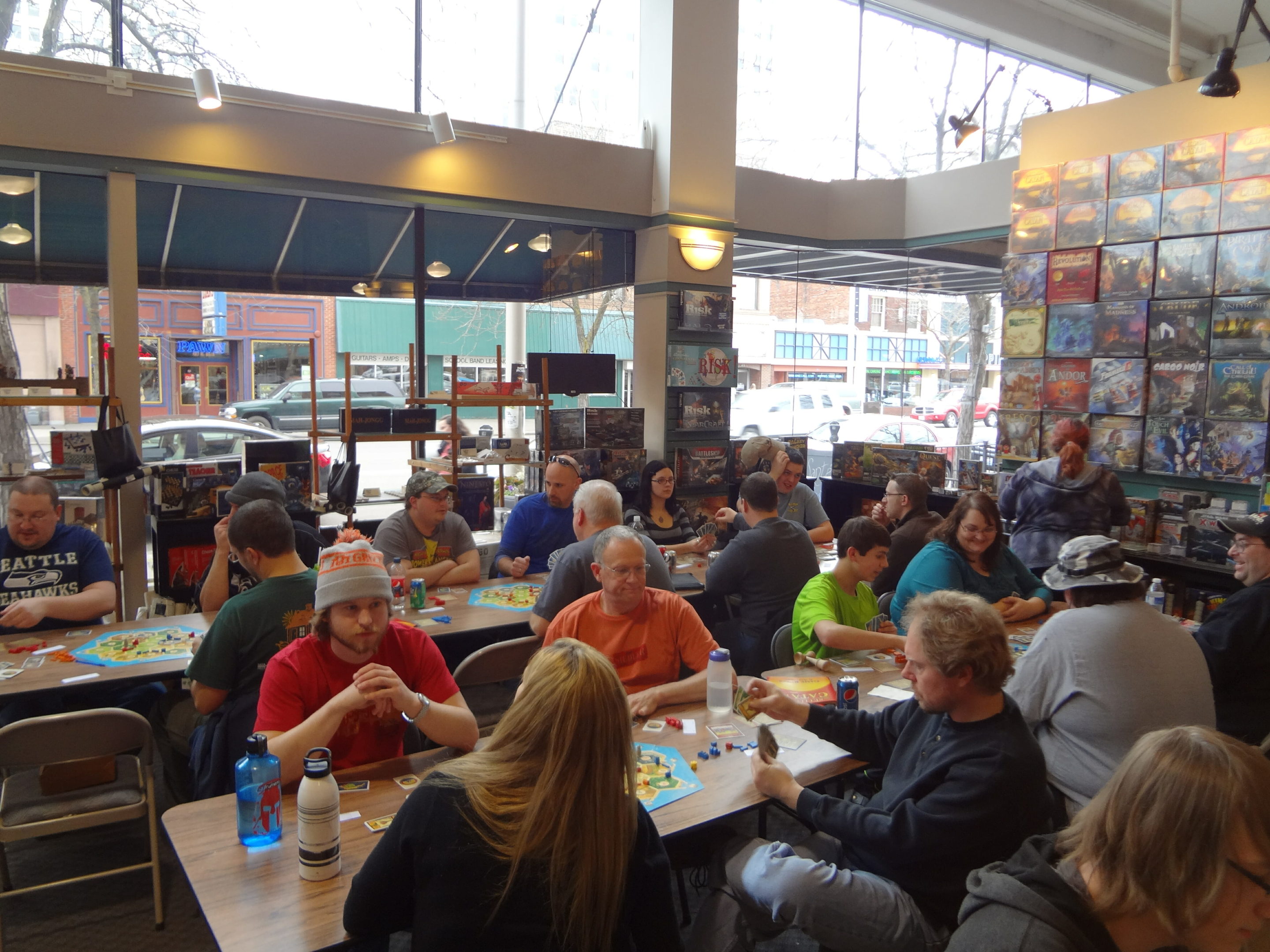Spoiler Warning: I’m twelve, so I’ll be making “Wood for Sheep” jokes every chance I get. Get off the train now if you’re not going this way.
Settlers of Catan was created in 1995 by Klaus Teuber, a German game designer and dentist. If you didn’t know he was German, you are forgiven, he has the the least German name of all of this business partners, Müller, Lüdtke, Neugebauer, and later Fritz Gruber. It is a “German Style Board Game,” which is to say that you can probably find a copy that has rules in only symbols and pictures. You will scratch your head for a while trying to figure out what they mean, and eventually fail and have to look the rules up online in your language. It also means that the game is simple in complexity, medium in length, abstract in concept and wood in shee- I mean indirect in conflict style. Players assume the role of “settlers” on the island of Catan, a fictional setting with no explanation of how you got there or why there are only three native organisms: grain, trees and sheep. They acquire resources, trade and build settlements for points.
Catan is wildly popular, winning at least a dozen awards, but the creators are too humble to put them up on their website for lazy sports reporters like me. Instead I have to look around the web to find out that they won four awards in their first year alone. (But he's still to lazy to put what the awards were...-Ed) If you haven’t played it, I recommend it. The game is deceptively simple. It feels like it is one of those games that has been around forever, like Monopoly, or Connect Four. Catan comes in a wide variety of flavors now, so if you prefer your board games mixed in with Pirates, Barbarians, or Star Trek, you’re in luck. If you prefer mixing your board games into breakfast cereal, or your wood into your sheep, not so much luck.
"Enough" you say! "You always do this, Seth! Less history, more information about competitive play in things that I did not think had competitive play! How can I get more wood for my sheep?!?!" Shut up, almost done.
The first championship for Catan was held in 1995, in Germany at the Deutsche Mannschaftsmeisterschaft im Brettspiel, or the German Board Game Championship for Teams. This was open only to German players. In 2002, so many other countries had created their own championship tournaments that it was decided that World Championships would be held. The top 2 players from each country compete for the top slot as the Best at Settling. The world championships are held every two years. 2008 was in Germany, 2010 was at GenCon Indy in the United States, and 2012 was back in Germany. In the off years, Europe and North America both hold their own championships, because we just can't get too much wood for our sheep.
Rankings are done by country, awarding points for the success of the highest placed individual from each nation. Winning the tournament nets your country 40 points, with less going to those ranked lower. Two individuals from each country are invited based on their performance in their own national championships, and the winner of the previous year is invited, mainly to scare the crap out everyone, especially the sheep. The United States came in 9th in 2012, with S. Evan Walters taking home 24 points. The trophy looks like some kind of monument to wood with a metal knot on the top. I guess you trade it for the sheep later?
 |
| This poor man made the mistake of putting his picture on the internet with Catan and a check. -Ed |
"SETH! SETH! I want to be a Catan World Champion! Where to I trade my wood for sheep?"
I don't think anybody wants that wood. There are dozens of Pre-qualifier events all over the United States right now, and your odds are not terrible. There were about 2000 participants from the US two years ago. If they have, oh, say, 39 pre-qualifiers already this year, and 25 more to come before GenCon in August, you are looking at a one-in-not-too-big-of-a-number chance. These aspiring settlers get whittled down to one representative from each pre-qualifier. Each of these is a feeder event for the National Championship at GenCon in Indiana, so winning one of these tournaments could get you transport, entry and lodging at the National Qualifing round. You can find your local pre-qualifier tournament in your area on Mayfair's website.
"Last article was about millions of dollars in prize money, so how much can I expect take home from Germany?"
Not much. The qualifying rounds only net you about $250 to $750 depending on attendance and location. This is not the advertising fueled revenue stream you are going to get with professional esports. On the other hand, we are talking about a board game that is coming up on it's 20th birthday soon. How long before we get global Elo rankings and age grouped tournaments? Are we going to see masters and grand masters of Catan? How much wood are they going to get for their sheep?
Seth Oakley is an educator and Returned Peace Corps Volunteer who lives in Pacifica, CA. He loves costuming, analog gaming and role playing games. He got this job in a bar after making poor life choices and has to work through 99 more articles before Mike will give him his soul back.
Did you enjoy this article? Follow us on Facebook to get more great content! We have a weekly podcast you can find on our main site. Also follow us on Twitter and Tumblr!


No comments:
Post a Comment